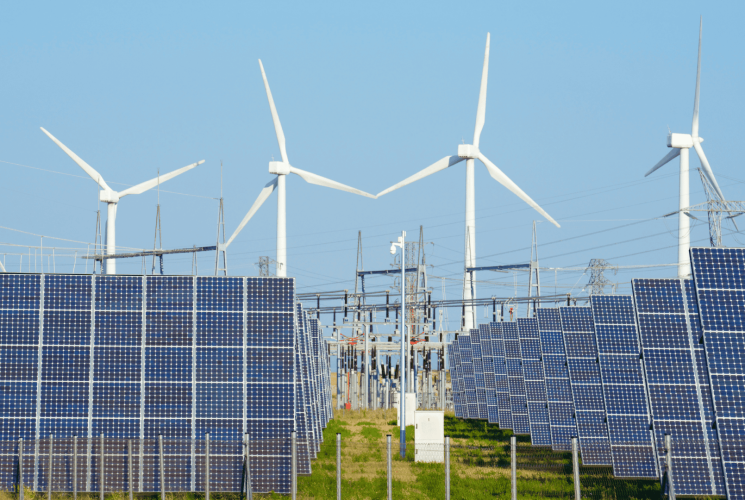Our B Corp Journey

Thanks to a lot of hard but immensely worthwhile work across the team, we’re currently well on track to being a certified B Corp! Through B Corp and beyond, we believe in doing all we can to make our business a sustainable, impactful force for good.
Whether you’re interested in starting your own B Corp journey, or curious about what becoming a B Corp entails, we wanted to shine a spotlight on the process itself as well as our own experience of it!
What is a B Corporation?
Certified B Corporations (also known as B Corps) are companies verified by B Lab to meet high standards of environmental and social performance, transparency, and accountability.
It's a community of around 6,500 businesses across 161 industries and 89 countries, that are utilising the immense power of business to commit to positively impacting all stakeholders, including workers, communities, customers and our planet.
These standards for a B Corp are reflected in the B Impact Assessment (BIA), B Lab’s tool for assessing a company’s performance, with sections for Governance, Workers, Community, Environment and Customers.
Where to begin with becoming a B Corp?
There’s an excellent tool on the B Corp website called SDG Action Manager, that is free to access. This is the tool we used in the very beginning.
It’s a great tool to use if you’re not yet ready to do the full thing. It’s quite in-depth, and there are actually more questions asked here than you will have in your actual submission! These questions are also different to those asked in the BIA, and are weighted differently so that the points available here don’t directly correspond to B Corp assessment points. However, it will give you a good idea of the terminology and questions, and will also help you identify the gaps in your organisation.
In our case, following our SDG Action Manager results, we then approached Seismic. Seismic is a consultancy specialising in B Corp, net zero and sustainability strategy. Whilst you don’t need to work with a consultancy to be able to submit, we certainly found them to be a real asset, supporting us throughout the process!
Seismic did an initial diagnostic assessment with us where they asked us a small proportion of questions from the real assessment and used it to extrapolate what our real score would be. They held interview sessions with us as well as requested documentation and other information before presenting us with our diagnostic results.
What’s the submission process like?
It took approximately 6 weeks to undertake our diagnostic with Seismic. At this stage, we made the decision to continue working with Seismic further into the B Corp process. Weekly meetings then began with Ali Perry, Sustainability Analyst at Seismic. These meetings continued through to our submission four months later.
During that period, we worked through the BIA together, working in the live B Corp portal. Seismic helped us work out our ‘Baseline score’, populating the assessment without submitting it, to provide us with an insight into how the business would currently score if we made no further improvements or commitments. This helped us identify key areas of improvement, get additional commitments in place, and work out the practicalities of how long everything would take.
Spearheading our B Corp improvement efforts, Holly Hemsley led Climate17’s B Corp project, gathering a team of volunteers to work on planning, implementing and reviewing improvements. Getting ‘B Corp ready’ has been a company-wide effort, and every member of staff has been involved or contributed in some way or another!
What happens after submission?
Once you’ve submitted the BIA for certification, you’ll enter the Evaluation Queue, and wait to be assigned an analyst for the following Evaluation stage.
You won’t hear much from B Lab during this time, so it can be a useful period of time to finalise your improvements and ensure everything is ready for Evaluation. The length of this post-submission period can vary tremendously, depending on the length of the queue – at the time of writing, the Evaluation Queue is said to take an average of 3-4 months. However, in our case, it was a little shorter, just shy of 3 months!
At this point, the Evaluation stage begins. During this stage, you are asked to provide information to exemplify important aspects of your company, and your BIA will be reviewed by an Analyst from B Lab’s Evaluation Team.
After this stage, you’ll be put into the Verification Queue, awaiting an analyst for the Verification stage, during which your score and BIA responses are fully verified. Score 80 points or more, and you’ll receive your B Corporation certification!
So what next for Climate17?
We’re currently in the Verification stage. Our score at the point of submission is one we are all tremendously proud of, and we can’t wait to share it with you all in the near future!
We hope you’ve found this snapshot of our journey so far helpful, and stay tuned for future updates!
Recent news and views
Sustainability in Transition: A Changing Market, a Crowded Talent Pool, and the Value of Specialist Recruitment
Over the past 12 months, the sustainability market has entered a new era. The job market surrounding it has become more complex, competitive and in many cases, challenging to navigate for both employers and candidates.

El rompecabezas de la energía renovable en España
El apagón de 2025 en España mostró que el reto está en la infraestructura, no en las renovables. Redes inteligentes, almacenamiento y flexibilidad serán claves para un futuro energético limpio y resiliente.

Sustainability in Transition: A Changing Market, a Crowded Talent Pool, and the Value of Specialist Recruitment
Over the past 12 months, the sustainability market has entered a new era. The job market surrounding it has become more complex, competitive and in many cases, challenging to navigate for both employers and candidates.

El rompecabezas de la energía renovable en España
El apagón de 2025 en España mostró que el reto está en la infraestructura, no en las renovables. Redes inteligentes, almacenamiento y flexibilidad serán claves para un futuro energético limpio y resiliente.

Sign up to our newsletter
Jobs, insights, resources and more. A monthly update, straight to your inbox.





